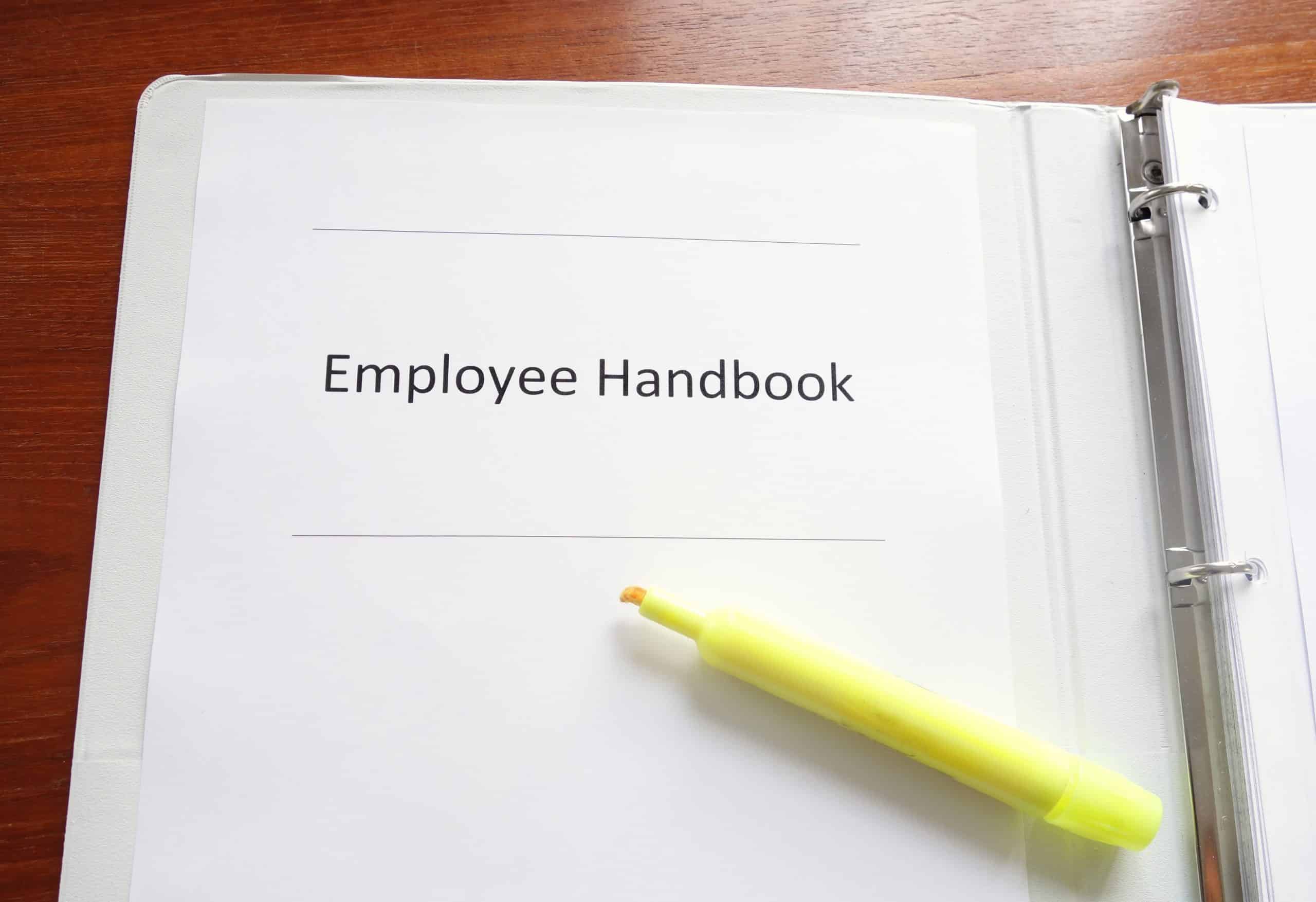Most Common Employee Handbook Mistakes
Your dress code must not violate federal anti-discrimination and disability regulations. In particular, you will want to be mindful of policies that may treat a person differently based on sex or religion – even if unintentional…
Having an employee handbook is a best practice, but not required by law. As a result, you are generally free to include or remove policies as you see fit. However, there are some policies that we consider essential to any handbook. If applied consistently, these policies will both help your organization run more smoothly and provide protection in the event that your employment practices or decisions are challenged.
Essential Policies
The following are policies that we strongly recommend every handbook include:
- Equal Employment
- At-Will Employment
- Sexual & Other Unlawful
- Harassment
- Corrective Action
- Complaint Procedure
- Pay Periods
- Overtime
- Payroll Deductions
- Drug & Alcohol
- Reasonable Accommodations
- Lactation Accommodations
- Confidentiality
- Inspections & Searches
- Federal & State-Specific
- Leaves of Absence
Don’t Limit Employees’ Rights to Discuss Wages
Policies that prevent employees from discussing their wages violate federal law. Section 7 of the National Labor Relations Act (NLRA) contains a provision that gives all employees – whether unionized or not – the right to engage in “concerted activities.” This includes the right to discuss their “terms and conditions of employment” with other employees. The National Labor Relations Board (NLRB) has taken the position for decades now that pay and benefits are term and conditions of employment, therefore any attempt to stifle employee discussion is a violation of federal law. Courts have uniformly supported this position.
Introductory Periods
Duration
Most employers have introductory periods (sometimes called probationary periods) ranging from 30 to 90 days. We advise against extending these periods beyond 90 days, as case law has shown that this may erode the employment at-will relationship.
Introductory v. Probationary
We also recommend utilizing the term introductory rather than probationary for a few reasons. First, the word probation has a negative connotation; it sounds punitive and as if new employees are not to be trusted; given that an introductory period has the same effect, we think the friendlier word Is the better choice. Second, and more importantly, the term probationary has been found to imply greater employment rights uponthe completion of the period.
Application to Benefits
The introductory period and the waiting period for insurance benefits do not have to be the same, but certainly can be for the sake of simplicity. The Affordable Care Act (ACA) prohibits waiting periods that exceed 90 calendar days, so you may be able to have the end of the introductory period coincide with the right to benefits. However, many carriers or brokers require that benefits be offered to new employees at the beginning of a calendar month, in which case a fixed introductory period and the right to benefits will likely not line up. It may be helpful to reach out to your carrier or broker to determine what the waiting period is for your specific plan if you are unsure.
Dress and Grooming Guidelines
Your dress code must not violate federal anti-discrimination and disability regulations. In particular, you will want to be mindful of policies that may treat a person differently based on sex or religion – even if unintentional. If you were challenged on such a policy, you would need to be able to show legitimate business necessity.
A few examples of potentially problematic requirements:
- Banning facial hair; employees may have religious or medical reasons for not shaving.
- Banning headwear; employees may have a religious reason for wearing a headdress.
- Requiring women to wear skirts, jewelry, or make-up; unless gender-specific apparel is a bona fide occupation qualification. This is exceedingly rare, dress codes like this are susceptible to litigation.
Items to Keep Out of Your Handbook
Health and Welfare Benefits Specifics
Generally, we recommend maintaining a separate Benefits Guide for employees that delineates exactly what health and welfare benefits are offered. This would also include the costs, open enrollment information, types of plans, eligibility, etc. Administratively, this guide could be as simple as a packet of Summary Plan Descriptions (SPDs) provided by carriers, or could be a more developed packet. The advantage of this separation is that it limits how often you will have to update the handbook and get new acknowledgments from employees. It is far easier to distribute a new Benefits Guide each year than it is to update and redistribute the entire employee handbook.
In the actual handbook, we recommend using a simple policy that outlines that the employer does offer these types of benefits, but that the information can change frequently.
Procedures, Safety Protocols, and Job Duties
We recommend that your Employee Handbooks contain information related to the employer-employee relationship and expectations that apply to all employees. Procedures, work processes, and instructional information may be better
of stored in an Operations Manual. As with leaving benefits specifics out of the handbook, this should reduce the number of times you need to redistribute the handbook and collect acknowledgments. It should also make it easier for employee to find the information they are looking for if you have two distinct documents, rather than one very large document with a wide variety of topics.
Arbitration, Non-Disclosure, and Non-Compete Agreements
These are legally binding contracts, but only if drafted and executed correctly. Correct drafting and execution should involve an attorney who is licensed to practice in your state. Often these contracts must include “magic words” to be enforceable, or contain certain time limitations. The bottom line is that if you try to do these on your own, without the assistance of an attorney, there is a very good chance they won’t hold up in court. Additionally, even if these documents are drafted correctly, they should not be distributed as part of the handbook. The handbook does not constitute an employment contract, and we don’t want it to. To ensure that our handbook serves as a policy guide only, and our contracts are correctly executed, they should be kept separate from one another.
Content provided by Ahola’s HR Support Center.
Looking for more HR help? Our team of Certified HR Professionals can help. Contact us to learn more.







Reply a Comment